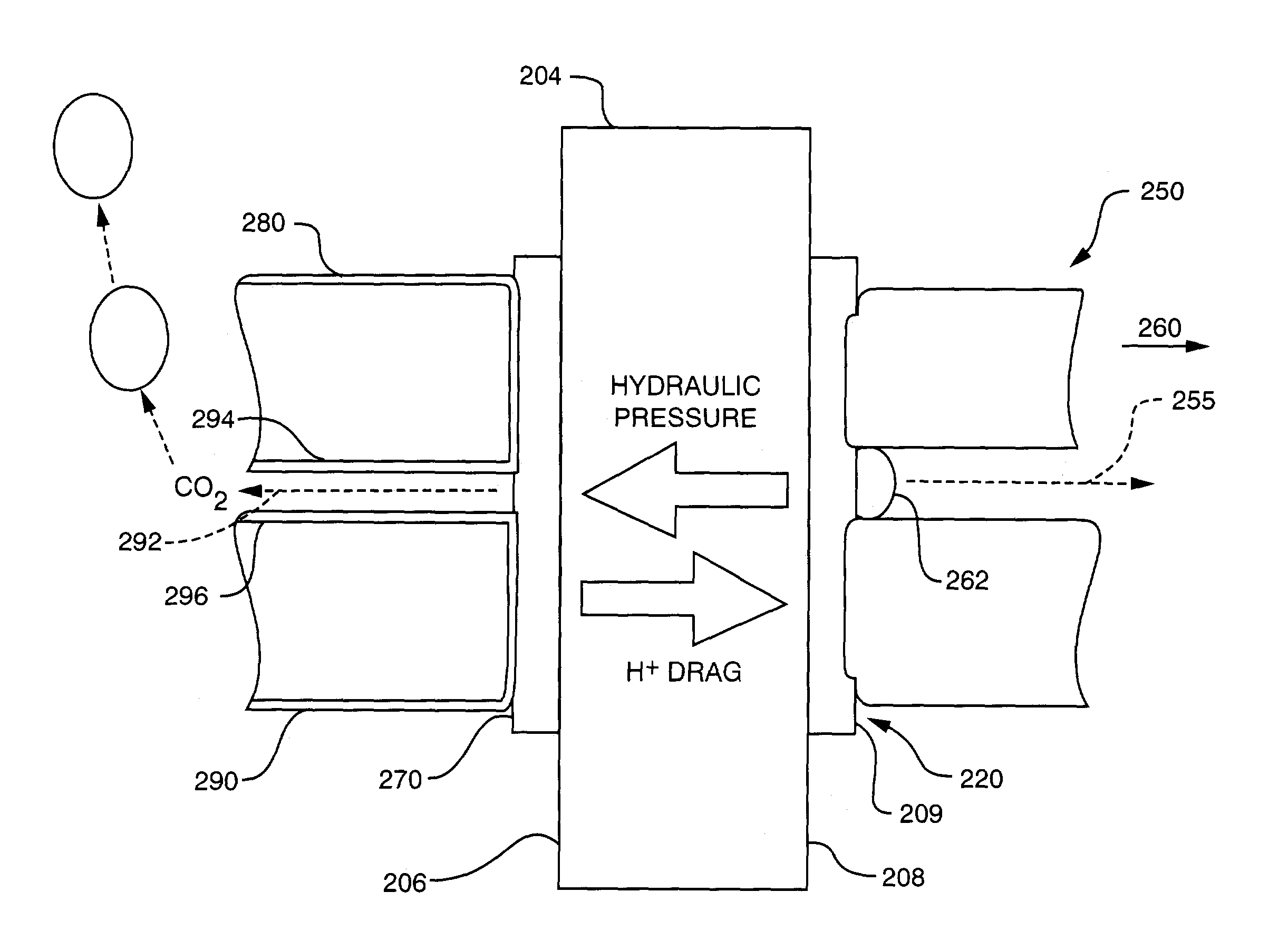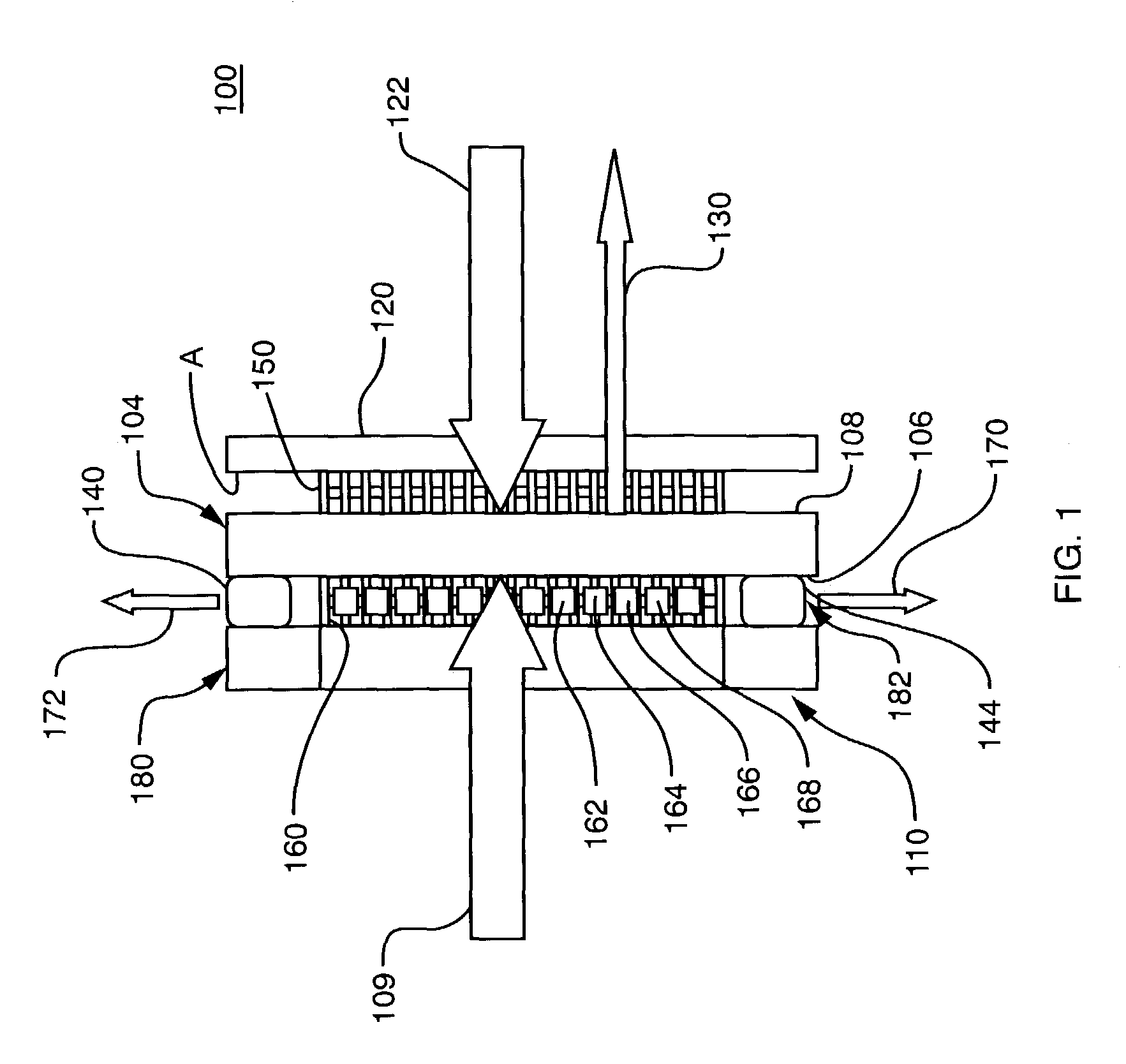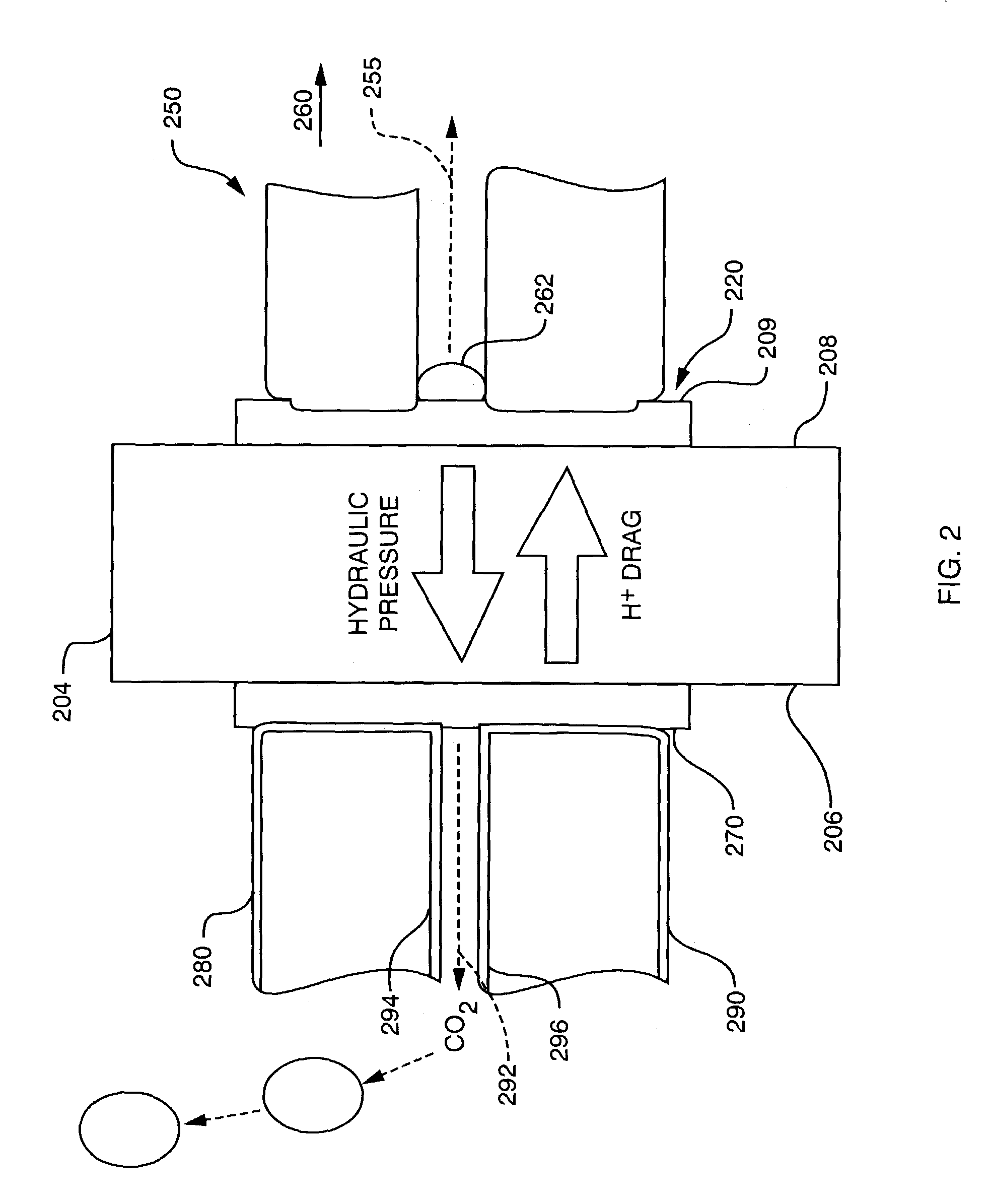Passive water management techniques in direct methanol fuel cells
a fuel cell and passive water management technology, applied in the field of direct oxidation fuel cells, can solve the problems of significant parasitic power loss, increased weight and volume of the power system, and inability to provide a desirable water/methanol mixture at the anode catalyst in a small volume, and achieve the effect of preventing cell dehydration and cathode flooding, facilitating the required water flow, and easy discharging
- Summary
- Abstract
- Description
- Claims
- Application Information
AI Technical Summary
Benefits of technology
Problems solved by technology
Method used
Image
Examples
examples
[0066]In order to further illustrate the various aspects of the present invention, a number of examples will be described which relate to the following concepts: 1) passive internal water transport (“water push back”) from cathode to anode using a microporous hydrophobic layer, and use of neat methanol; and 2) curbing evaporative water loss by limiting water evaporation rate in the cathode.
Examples of Effective Passive Internal Water Transport from Cathode to Anode Using a Microporous, Highly Hydrophobic Layer, Bonded to the Cathode Aspect of the Membrane in Accordance with the Invention
[0067]By way of background, and in order to enhance further the understanding of the examples concerning water push back, we first illustrate water loss rate measurements in air-breathing DMFCs in order to reveal the importance of (i) use of a highly hydrophobic microporous layer in accordance with the invention, and (ii) the advantages of robust bonding / lamination of this layer to the cathode aspect...
PUM
 Login to View More
Login to View More Abstract
Description
Claims
Application Information
 Login to View More
Login to View More - R&D
- Intellectual Property
- Life Sciences
- Materials
- Tech Scout
- Unparalleled Data Quality
- Higher Quality Content
- 60% Fewer Hallucinations
Browse by: Latest US Patents, China's latest patents, Technical Efficacy Thesaurus, Application Domain, Technology Topic, Popular Technical Reports.
© 2025 PatSnap. All rights reserved.Legal|Privacy policy|Modern Slavery Act Transparency Statement|Sitemap|About US| Contact US: help@patsnap.com



